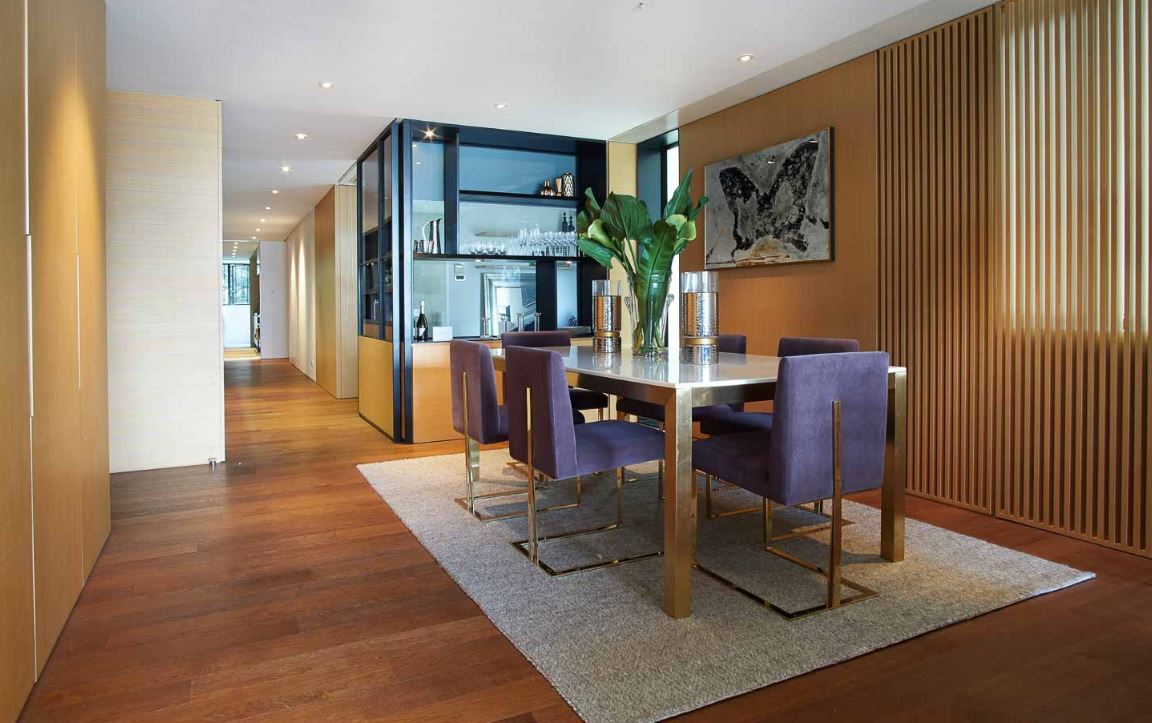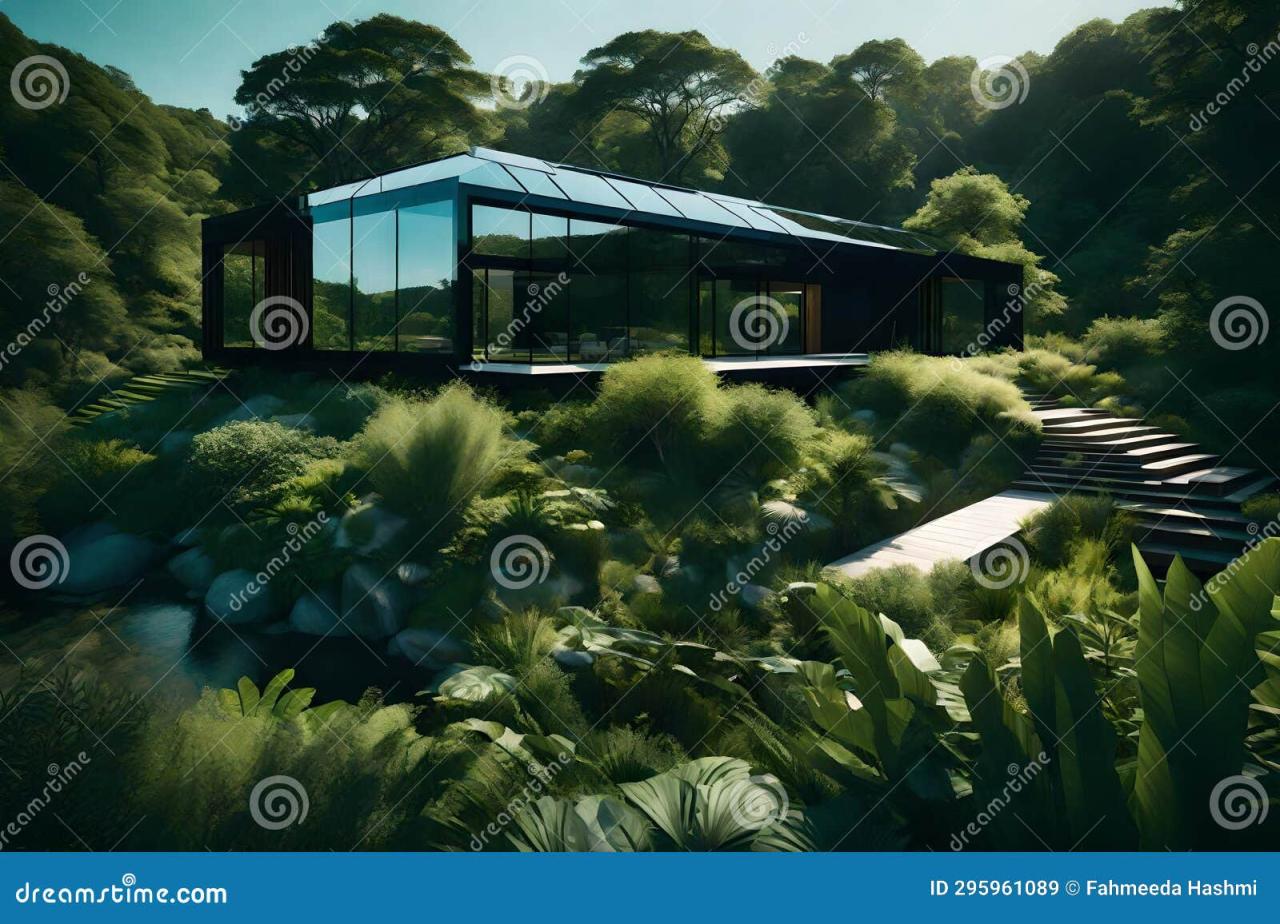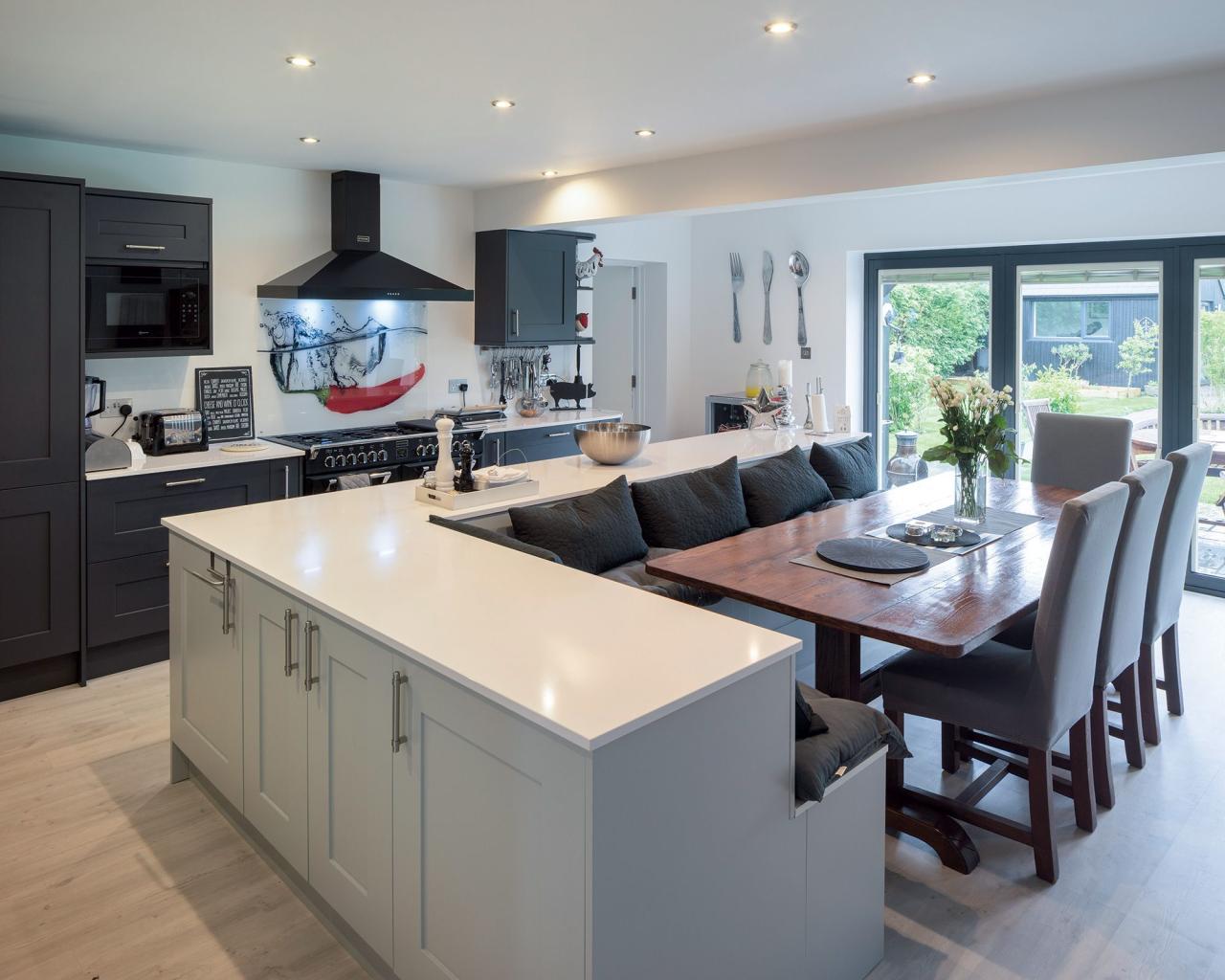Maximizing natural light in a living room design is key to creating a bright, welcoming, and energy-efficient space. This isn’t just about bigger windows; it’s a holistic approach encompassing strategic window placement, thoughtful interior design choices, and clever use of materials and techniques to amplify and diffuse the available sunlight. We’ll explore how to transform your living room into a sun-drenched haven, even on less sunny days.
From optimizing window placement and types to selecting light-reflective materials and strategically arranging furniture, we’ll cover a range of practical solutions to boost your living room’s natural light. Understanding the interplay between window size, orientation, and interior design elements is crucial. We’ll examine how different color palettes, flooring choices, and even the strategic use of mirrors can dramatically enhance the perceived brightness of your living space.
This guide provides actionable steps to achieve a naturally lit living room that’s both stylish and comfortable.
Window Placement and Size: Maximizing Natural Light In A Living Room Design
Optimizing window placement and size is crucial for maximizing natural light in a living room. The direction the windows face, their size, and the type of window all significantly impact the amount and quality of light entering the space. Careful consideration of these factors can transform a dimly lit room into a bright and airy haven.
Living Room Layouts Showcasing Optimal Window Placement
The following table illustrates three different living room layouts, each designed to maximize natural light intake through strategic window placement and sizing. These examples demonstrate how varying window orientations and dimensions can affect light distribution throughout the room.
| Layout | Window Orientation & Size | Impact on Light Distribution |
|---|---|---|
| Layout 1: South-Facing Emphasis | One large (8ft x 4ft) south-facing window, two smaller (3ft x 3ft) east-facing windows. | Provides abundant direct sunlight throughout the day from the south-facing window. East-facing windows offer soft morning light. |
| Layout 2: Balanced Light | Two large (6ft x 4ft) windows, one east-facing and one west-facing. One smaller (3ft x 2ft) north-facing window. | Provides a balanced distribution of light throughout the day, with morning light from the east and afternoon light from the west. The north-facing window provides soft, diffused light. |
| Layout 3: Maximizing West Light | One large (10ft x 4ft) west-facing window, featuring a bay window extension. One smaller (4ft x 3ft) north-facing window. | Provides strong afternoon and evening light, with the bay window increasing the surface area for light intake. The north-facing window provides supplementary light. |
Benefits and Drawbacks of Different Window Types
Different window types offer varying benefits and drawbacks regarding natural light intake. Choosing the right window type is vital for optimizing light and overall room design.
Bay windows, for instance, project outwards from the wall, creating a larger glass area and allowing more light to enter. However, they are more expensive and require more complex installation. Casement windows, which open outward on hinges, offer excellent ventilation but might not be as effective at maximizing light intake as larger, fixed windows. Skylights, situated on the ceiling, bring in ample overhead light, creating a brighter and more spacious feel.
Maximizing natural light in a living room is all about strategic window placement and light-colored decor. However, good design extends beyond the living space; even the bathroom benefits from thoughtful choices, like investing in a best quality bathroom vanity cabinet for the money to brighten the space. Returning to the living room, sheer curtains can help diffuse harsh sunlight while still allowing ample natural illumination.
However, they can be more expensive to install and require regular maintenance.
Light-Gathering Capabilities of Different Window Materials
The material of the window frame and the type of glass used significantly influence light transmission.
The following list compares the light-gathering capabilities of various window materials:
- Glass Type: Clear glass offers the highest light transmission. Low-E glass reduces heat transfer but can slightly reduce light transmission. Tinted glass reduces glare and heat but also significantly reduces light transmission. Consider the climate and desired level of light control when selecting glass type.
- Frame Material: Wood frames offer good insulation but can obstruct more light than slimmer aluminum or vinyl frames. Darker colored frames absorb more light than lighter colored frames. The visual impact of the frame material on the overall light ambiance should also be considered.
Interior Design Elements for Light Enhancement
Maximizing natural light in your living room goes beyond just window placement and size. Strategic interior design choices can significantly amplify the brightness and create a more welcoming atmosphere. By carefully selecting colors, materials, and furniture placement, you can transform your living space into a sun-drenched haven.
The following design elements work together to enhance the impact of natural light, creating a brighter and more spacious feeling living room.
Light-Colored Walls and Reflective Surfaces
Light-colored walls, ceilings, and floors are crucial for maximizing natural light. Lighter colors reflect more light than darker ones. Dark colors absorb light, diminishing the overall brightness of the room. For instance, a room painted in a creamy white will appear considerably brighter than one painted in dark grey, even with the same amount of natural light entering.
Similarly, incorporating reflective surfaces like polished wood floors or metallic accents can bounce light around the room, distributing it more evenly and reducing shadows. Consider using glossy paint on walls or adding strategically placed mirrors to amplify the effect. Mirrors, especially those placed opposite windows, can effectively double the amount of natural light entering the room.
Furniture Arrangement for Optimal Light Flow
The placement of furniture significantly impacts natural light distribution. Avoid blocking windows with large pieces of furniture. Instead, arrange furniture to allow light to flow freely through the room. For example, position sofas and armchairs slightly away from windows, allowing ample space for light to penetrate. Using transparent or light-colored furniture can further minimize light obstruction.
Consider using glass-topped coffee tables or opting for furniture with light-colored upholstery. A carefully planned arrangement will prevent shadows and create a more open and airy feel.
Sheer Curtains and Blinds for Light Management, Maximizing natural light in a living room design
Sheer curtains or blinds offer an excellent way to control light levels without sacrificing natural light. Sheer curtains, made from lightweight fabrics like linen or cotton voile, allow diffused light to filter through while maintaining privacy. These fabrics scatter light, creating a soft and gentle glow throughout the room, reducing harsh shadows. Alternatively, cellular shades or bamboo blinds offer excellent light control.
Maximizing natural light in your living room design can dramatically improve the space’s feel. To showcase your bright and airy room, consider creating a short video tour; you can easily edit it using free PC video editing software like those reviewed on this site: Aplikasi Edit Video PC Gratis. Then, share your stunning, naturally lit living room with the world! Remember, strategically placed mirrors can also help bounce light around the room.
They can be adjusted to filter out direct sunlight while still allowing a significant amount of diffused light to enter the room. The choice of material will impact the level of light filtering; heavier materials offer more control over light intensity, while lighter materials allow for a softer, more diffused light.
Light-Colored Decor and Materials
Choosing the right colors and materials for your living room’s decor is crucial for maximizing natural light. Light colors possess a remarkable ability to reflect light, effectively brightening the space and creating a more airy and spacious feel. Conversely, dark colors absorb light, leading to a dimmer, more cramped atmosphere. Understanding this fundamental principle is key to transforming your living room into a sun-drenched haven.Light-colored flooring, rugs, and furniture significantly impact the overall brightness of a living room.
Light-colored flooring, for instance, acts as a large reflective surface, bouncing light back upwards, brightening the entire room. A light-colored rug placed under a seating area not only adds warmth and style but also helps to reflect light from the floor upwards, enhancing the effect. Similarly, light-colored furniture, such as a cream-colored sofa or beige armchairs, will reflect more light than their darker counterparts, contributing to the room’s overall brightness.
Materials like polished hardwood floors (light oak or maple), light-colored wool rugs, and upholstered furniture in linen or cotton fabrics are excellent choices for maximizing light reflection. These materials possess inherent reflective properties, enhancing the room’s luminosity. For example, a high-gloss white lacquered coffee table will reflect light more effectively than a dark wood one.
The Impact of Paint Color on Light Distribution
The paint color you choose for your walls has a profound effect on how natural light is perceived and distributed throughout your living room. Lighter shades, such as white, cream, or light gray, reflect light more effectively, making the room feel larger and brighter. Conversely, darker shades absorb more light, making the room feel smaller and potentially darker, even with ample natural light sources.
Maximizing natural light is key to a bright and airy living room. Consider large windows and sheer curtains to let the sunshine flood in. If you’re planning a video showcasing your beautifully lit space, you might find alight motion pro apk helpful for editing. After all, good lighting makes for great video, and a well-lit living room is a joy to film and enjoy.
The subtle differences between shades can also significantly impact the overall feel. For instance, a warm cream color can create a cozy atmosphere, while a cool gray can provide a more modern and sophisticated look, both while maximizing light reflection. A pure white might feel sterile for some, whereas a soft beige offers warmth without sacrificing light reflectivity.
Advantages and Disadvantages of Various Light Shades
White, cream, beige, and gray shades, while all considered light colors, offer unique advantages and disadvantages when used in a living room designed to maximize natural light.White walls offer the highest light reflectivity, creating a bright and airy feel. However, they can sometimes appear stark or sterile, requiring careful consideration of other design elements to add warmth and personality. Cream provides a warmer, more inviting alternative to pure white, while still offering excellent light reflectivity.
It offers a more forgiving backdrop for various furniture and decor styles. Beige provides a neutral and versatile backdrop, offering a sense of calm and sophistication. However, it may not be as bright as white or cream. Gray, depending on its undertone, can offer a modern and sophisticated look while still reflecting light effectively. However, darker grays may absorb more light than lighter shades.
The choice ultimately depends on personal preference and the desired overall aesthetic.
Room Layout and Spatial Considerations
The layout of your living room significantly impacts how effectively natural light is utilized. An open and well-planned design can dramatically improve the brightness and airy feel of the space, while a poorly designed layout can leave areas feeling dark and cramped, regardless of window size or placement. Careful consideration of your room’s shape and the placement of furniture is crucial for maximizing natural light.Open floor plans, by their very nature, allow light to penetrate deeper into the living area.
Imagine a living room connected to a dining area and kitchen without any walls separating them. Light entering through windows in any of these spaces will readily illuminate the entire area, creating a bright and spacious feel. In contrast, a compartmentalized design, with separate rooms for living, dining, and kitchen, would require more artificial lighting and result in darker, more confined spaces.
The lack of visual and physical connectivity hinders the natural light’s ability to reach all areas equally. This contrast highlights the significant role of spatial planning in maximizing natural light.
Comparison of Living Room Layouts and Light Efficiency
Different living room layouts have varying degrees of success in capturing and distributing natural light. The shape of the room and the placement of windows directly influence the effectiveness of natural light penetration. The following table compares the light efficiency of three common living room layouts:
| Layout Type | Light Efficiency | Advantages | Disadvantages |
|---|---|---|---|
| Rectangular | Moderate | Simple to furnish, easy to maximize light from windows on one or two sides. | Can feel narrow and lack depth if not properly designed; light may not reach all corners effectively. |
| L-Shaped | High | Offers flexibility in furniture placement; can utilize light from two perpendicular walls, creating a bright and spacious feel. | Can be more challenging to furnish effectively; careful planning is required to avoid blocking light. |
| U-Shaped | High | Maximizes wall space, creating a cozy and intimate atmosphere; can incorporate multiple light sources. | Can feel enclosed if not properly designed; careful consideration of furniture placement is crucial to avoid blocking light. |
Strategic Furniture Placement for Optimal Light Distribution
To maximize the benefits of natural light, strategically place furniture to avoid obstructing light sources. For example, avoid placing large sofas or armchairs directly in front of windows. Instead, consider positioning them at angles or slightly off-center to allow light to filter through. Using transparent or light-colored furniture can also help minimize light blockage. Mirrors strategically placed can also reflect light deeper into the room, effectively brightening darker corners.
In a rectangular room, placing a tall, narrow bookcase against a wall perpendicular to the window can help diffuse the light and prevent harsh shadows. In an L-shaped room, using smaller furniture pieces along the shorter wall allows for better light penetration. In a U-shaped room, maintaining open space in the center allows for free flow of light throughout the entire area.
Advanced Techniques for Light Maximization
Taking your living room’s natural light to the next level involves exploring some more advanced techniques beyond simply choosing the right windows and paint colors. These methods can significantly enhance brightness, especially in areas with challenging layouts or limited window access. Let’s delve into some effective strategies.
Light Shelves
Light shelves are horizontal surfaces, typically positioned above eye level, designed to reflect and distribute natural daylight deeper into a room. They work by intercepting incoming sunlight from high-angle windows and redirecting it towards the ceiling and back into the room, effectively illuminating areas that would otherwise remain dim. Materials like white or highly reflective painted gypsum board, polished metal, or even strategically placed mirrors can be used to create effective light shelves.
Maximizing natural light in your living room design is key to a bright and airy space. Clever use of mirrors and light-colored furniture can help, but don’t forget about other areas of your home! Efficient space use is important everywhere, like in the bathroom, where a great solution is a bathroom vanity cabinet that fits a corner space efficiently , freeing up floor space and maximizing the feeling of openness.
This same principle of maximizing space applies to your living room, ensuring that even small rooms feel welcoming and light-filled.
Their placement is crucial; ideally, they should be positioned above windows, extending outwards to capture as much sunlight as possible. The optimal height and depth will vary depending on window height and the desired light distribution. A light shelf that’s too narrow may not capture enough light, while one that’s too deep could cast unwanted shadows. Consider the angle of the sun throughout the day to optimize the shelf’s effectiveness.
Solar Tubes or Light Tunnels
For rooms with limited or no window access, solar tubes, also known as light tunnels, offer a practical solution. These systems use a specialized tube to capture sunlight from the roof and transmit it down into the interior space. The tube is typically comprised of a highly reflective material to minimize light loss during transmission. A dome-shaped collector on the roof gathers sunlight and directs it through the tube to a diffuser inside the room.
Installation involves cutting a hole in the roof and ceiling, so careful planning and professional installation are recommended. While the initial cost might be higher than other methods, the benefit of bringing natural light into otherwise dark areas can be transformative, improving mood and reducing reliance on artificial lighting. Modern solar tubes are available in various diameters and designs to suit different needs and aesthetic preferences.
Light-Diffusing Films or Coatings
Applying light-diffusing films or coatings to existing windows is a relatively simple and cost-effective method for improving light distribution. These films are designed to soften and diffuse harsh sunlight, preventing glare and creating a more even distribution of light throughout the room. They come in various levels of diffusion, allowing you to tailor the effect to your preferences. Installation is generally straightforward, involving applying the film to the window’s surface using a water-based adhesive.
These films can also offer added benefits such as increased privacy and UV protection. The choice of film depends on the specific needs of the space, considering factors like the amount of existing sunlight, desired level of diffusion, and any privacy concerns. For example, a frosted film might be suitable for a bathroom window, while a less opaque film might be preferred for a living room to maintain a view.
Concluding Remarks

Source: craiyon.com
By carefully considering window placement, interior design elements, and clever material choices, you can significantly increase the amount of natural light in your living room. Remember, maximizing natural light isn’t just about aesthetics; it improves mood, energy efficiency, and the overall comfort of your home. From simple changes like repainting walls to more involved projects like installing skylights, the possibilities are vast.
Embrace the power of natural light and transform your living room into a brighter, more inviting space.
Essential FAQs
Can I maximize natural light in a north-facing living room?
Yes! While a north-facing room receives less direct sunlight, you can still maximize its brightness using light-colored walls and furniture, reflective surfaces, and strategic lighting placement. Consider sheer curtains to diffuse available light.
What are the downsides of using too many mirrors?
While mirrors are great for reflecting light, too many can create a cluttered or overwhelming feeling. Strategically place a few larger mirrors rather than many smaller ones.
How much does installing skylights cost?
The cost of installing skylights varies greatly depending on size, type, and installation complexity. It’s best to get quotes from multiple contractors.
Are there any energy-saving benefits to maximizing natural light?
Absolutely! By maximizing natural light, you reduce the need for artificial lighting, leading to lower electricity bills and a smaller carbon footprint.
What about privacy concerns with larger windows?
Consider frosted glass, blinds, or curtains to maintain privacy while still letting in plenty of natural light.
- Soundproof Glass Your Guide to Quieter Spaces - June 2, 2025
- Energy-efficient windows Smarter Choices - June 2, 2025
- How to Calculate the Right Amount of Outdoor Lighting for My Property - February 21, 2025








